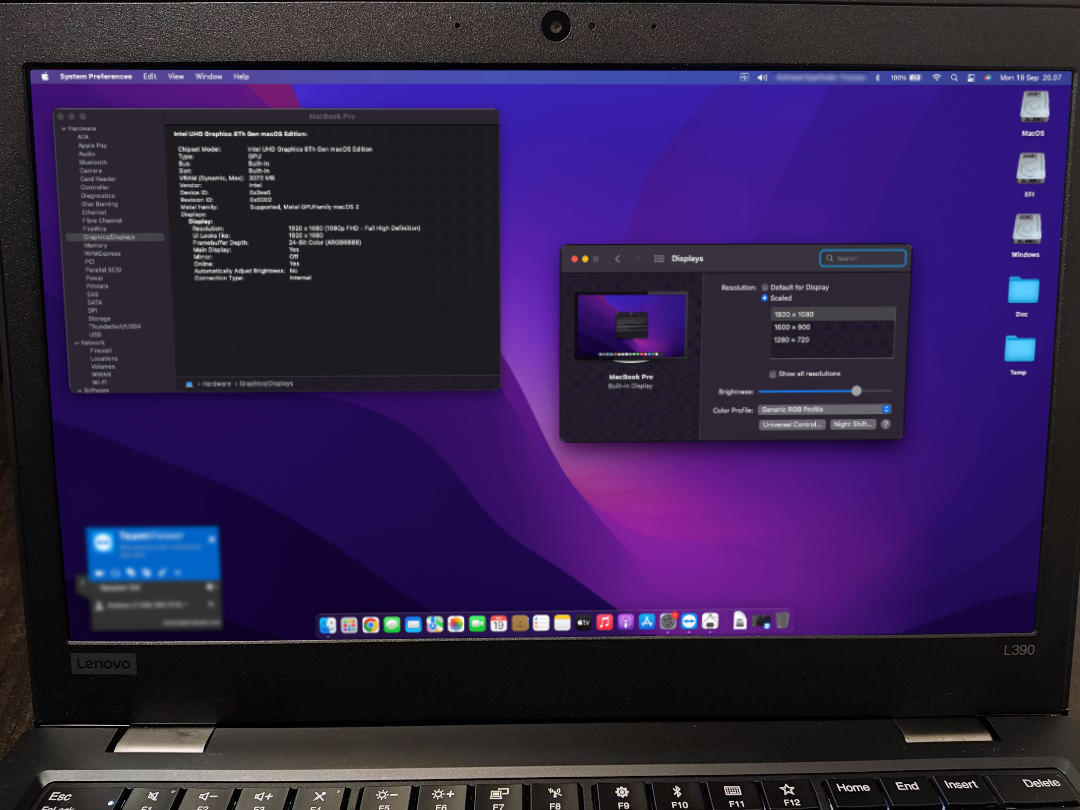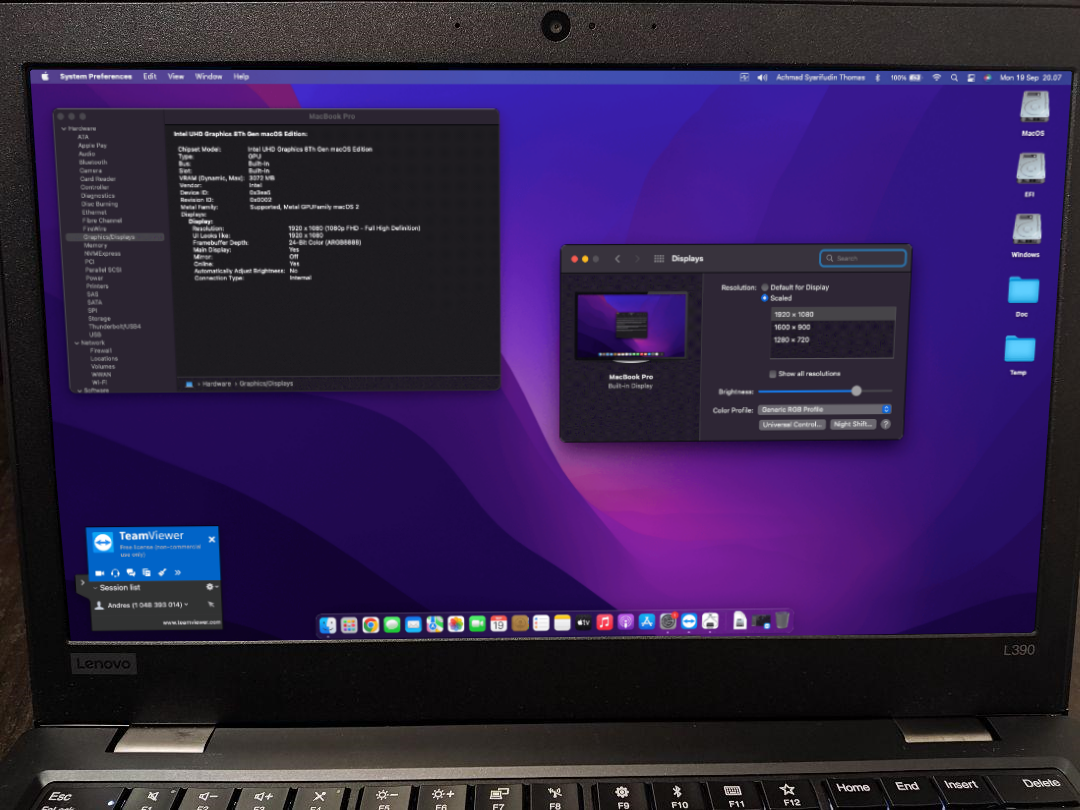- CPU: AMD Ryzen 5 3500U
- GPU: Vega 8 (iGPU)
- RAM: 16 GB DDR4 (overclocked to 2666 MHz via Smokeless UMAF)
- Laptop model name: HP 15-db1061nw
- Audio Codec: Realtek ALC236
- Ethernet: Realtek PCI GbE
- Wi-Fi/BT card: Realtek RTL8821CE (Not supported, I've mounted an USB Archer T2U Nano internally - more info in the description)
- Touchpad: Synaptics touchpad (PS/2)
- Keyboard: Integrated (USB)
- NVMe SSD: WDC PC SN530 SDBPNPZ-512G-1006
- SATA SSD: Samsung 860 EVO
(I'm using a MacPro7,1 SMBIOS as it was the only way I could get iServices to work)
This is a laptop I have gotten in Poland as I needed a machine for an apprenticeship there, and it's very likely the last hackintosh I ever make: I'm planning to stick by this one for as long as I can and, once becomes too old to be useful, I will buy an Apple Silicon based Mac if I want to run macOS.
iGPU aside (seriously impressive stuff by the NootInc team!), the tricky parts to get this hackintosh laptop to work were the Wi-Fi/BT card and USB. The stock Wi-Fi card is unsupported by macOS and, while I could've bought and installed a supported M.2 model, I've decided to use a compatible USB one I had lying around from a previous project instead and mount it internally, connecting it to the laptop's internal antenna so I can still get good reception. I know it's not ideal, but I'm okay with not having AirDrop and I can always get a proper compatible card down the line if I change my mind, so why not?
Then, there's the USB issue. Oh boy. If you're not up to speed, some Ryzen APU-based hackintoshes hang on boot when XHC0 & XHC1 get initialized due to a not yet fully understood issue. You can work around this either by disabling one of the two controllers using Smokeless UMAF (but that means losing some external/internal ports, plus some laptops don't have that option in UMAF... like this one) or use GenericUSBXHCI, which will allow you to boot into the OS, however most of its functions are broken under 11.0+ (no USB mass storage, and most USB devices that aren't mice/keyboards won't work).
Therefore, because I couldn't use the UMAF workaround, I was stuck with a laptop with next to no USB support in macOS up until I decided to screw around with GenericUSBXHCI during some downtime at work, and I've managed to make USB work properly on my machine! The result is this experimental kext - make sure to read the readme if you're planning to test it out on your hackintosh, neither I nor the guys I talked to at Noot Inc. are sure what exactly is making it work so far so it's not a proper fix just yet. (But if you are affected by the USB issues and do end up trying it, let me know if it worked for you!)





